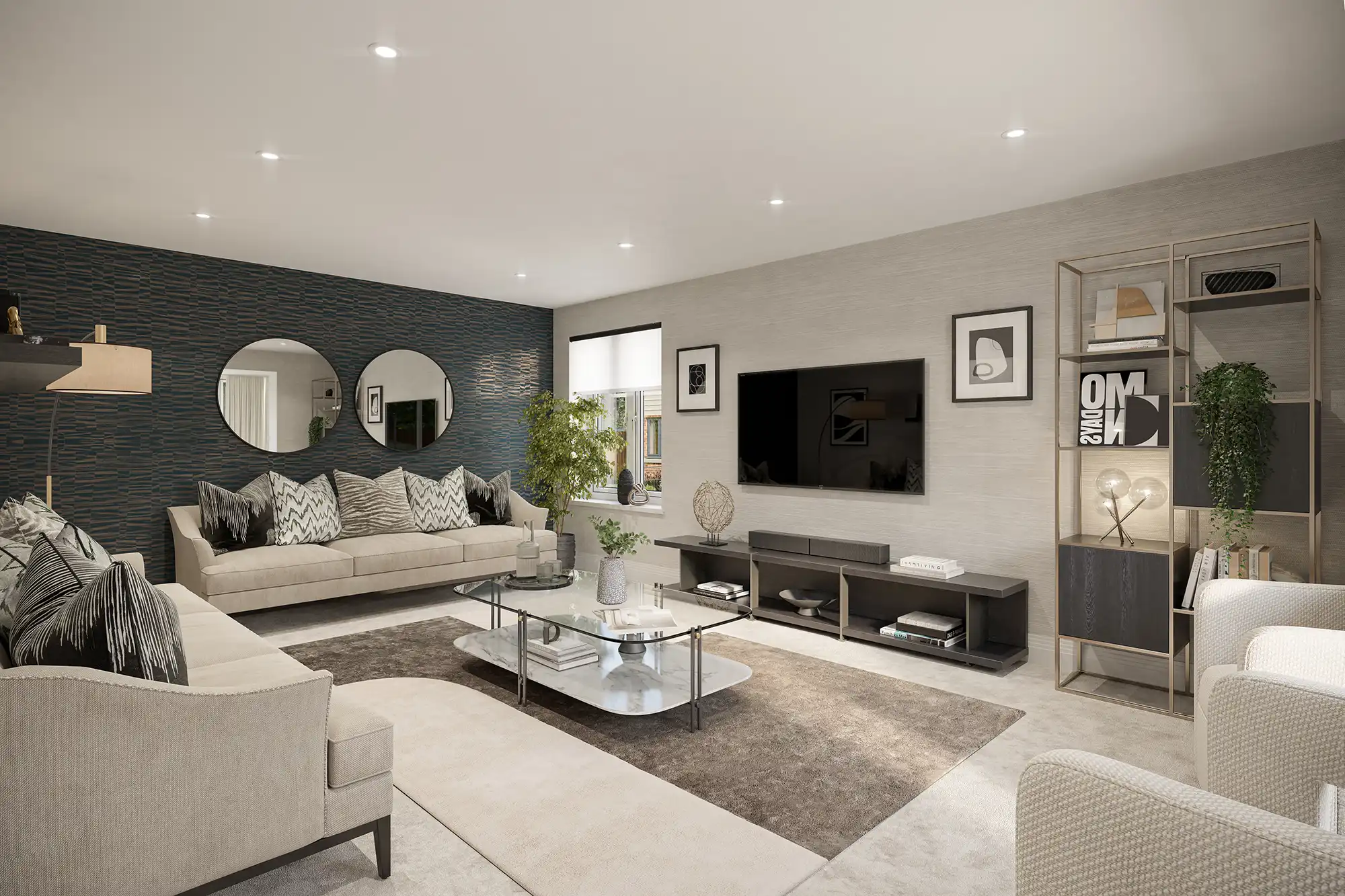Most homeowners will be familiar with the term ‘downsizing.’ But in recent years, the concept of ‘rightsizing’ — a term distinct from the traditional notion of downsizing — has appeared as a refreshing and thoughtful trend in the housing market.
Rightsizing is about finding the right home that matches your current needs and desires without the limitations or connotations often associated with downsizing. The idea is not simply about moving into a smaller home to save on costs or maintenance; it is about achieving the right fit for your change in lifestyle — prioritising comfort and convenience whilst maintaining meaningful social and family connections.
This shift reflects a broader change in how people, particularly those in their early 60s, view their living arrangements and quality of life. As people move into their 60s, they are not necessarily looking to ‘retire’ or ‘downsize’ in the traditional sense. They are still active, often still working and still deeply involved in family life.
Rightsizing offers the chance to live in a home that supports this lifestyle. Smaller, yes, but also smarter — with all the features that make life enjoyable and convenient whilst ensuring your home can continue to be the ‘hub’ of family life.
Moving beyond downsizing
Traditionally, when people think of downsizing, they imagine a retiree in their late 70s or 80s, reducing their home size significantly to save on maintenance costs by moving to an apartment or even a retirement community.
Downsizing generally involves a substantial change in environment and lifestyle — often with reduced living space and independence. It is a necessity-driven decision, influenced by factors like declining health or financial limitations, and tends to evoke feelings of loss or even resignation.
Rightsizing, by contrast, is about optimisation, not loss.
The motivations behind rightsizing often differ from those of downsizing. For many homeowners in their 60s, their children have left the family home, and their large house — whilst filled with memories — simply does not match their current needs anymore. The house may have too many bedrooms, too much space that goes unused and a level of upkeep that no longer suits their lifestyle. Yet, at the same time, these ‘rightsizers’ do not want to forgo the sense of having a family hub — a welcoming, comfortable space for all the family to gather over holiday periods, weekends or simply for a Sunday dinner.
So, rather than moving out of necessity, rightsizing is a proactive and positive choice to create a home environment that better aligns with the homeowner’s present circumstances.
Rightsizing allows people to maintain autonomy within their home, curating their living space for comfort and modernity whilst continuing the important role of being a family hub — one where children and grandchildren can comfortably visit and stay over.
It is not about compromise; it is about designing a life that makes sense now.
An apartment, bungalow or house?
A notable aspect of the rightsizing trend is its distinction from the more common move to an apartment or bungalow.
Apartments, particularly smaller ones, do not always provide the flexibility that many people desire at this stage in their life. Although an apartment can be perfect for someone looking for a major lifestyle simplification, it often lacks the outdoor space and extra rooms that many still want for their family.
Bungalows, whilst often accessible and easy to maintain, also come with limitations. These homes tend to be smaller in footprint and may not have enough rooms to accommodate hobbies, a study or grandchildren staying over.
For many, the idea of being able to host and accommodate family members comfortably is non-negotiable, making a modestly sized house — which is still spacious enough to function as a family hub — a better option.
The ideal rightsized home strikes a balance between practicality and comfort. It may have one or two extra bedrooms for visiting children or grandchildren, as well as versatile space for personal use like a study, a TV room or a hobby space.
Rightsizers typically desire quality over quantity. A new two-storey home with a spacious kitchen and family room, for example, can serve as a perfect venue for family gatherings. A garden with low maintenance, often enhanced with practical elements like astroturf, provides an outdoor area where grandchildren can play freely without the hassle of intensive upkeep. The design of new homes caters to convenience without sacrificing the ability to accommodate larger family events and a sociable lifestyle.
Thinking practically
Large properties require more time, effort and resources for cleaning, gardening and general upkeep, so maintenance is often a significant concern for rightsizers.
A well-designed, rightsized home can provide the perfect balance of space and low maintenance — particularly when opting for a new-build house. New homes often feature modern amenities and high specifications that make daily life more convenient.
Another huge benefit is the reduction in running costs. Heating a large, older home can be inefficient and expensive. By moving to a smaller, newer property, energy consumption can be optimised, leading to lower utility bills and a more sustainable lifestyle.
It is also worth noting that, whilst releasing some capital may be part of the motivation, rightsizing is not primarily about freeing up large amounts of money. It is about using resources intelligently to maintain a desirable quality of life. For many, it is about finding a home that offers far greater suitability and comfort for their current phase of life — with a refreshing modern style and low running costs.
Location remains a key factor in the rightsizing decision. Many people considering this move want to stay close to their community, friends and family. Rather than uprooting, they want to find a better-suited home, ideally within the same area or just a short distance away. Proximity to loved ones is especially important for those who wish to continue hosting family events or helping with grandchildren.
Rightsizing allows individuals to stay in the neighbourhoods they know and love, surrounded by familiar amenities like their golf and tennis clubs or favourite cafes and restaurants.
A new chapter, not a conclusion
Beyond the practical perks, rightsizing can have emotional benefits, too.
Downsizing can feel like a move best suited for ‘older people’ towards the end of independence — a reduction in lifestyle rather than a shift.
Rightsizing, in contrast, is empowering. It represents a conscious decision to enhance one’s quality of life — recognising that whilst a large five-bedroom house may have been perfect when the kids were teenagers, it is no longer needed once the children have left the family nest. It is about letting go of what is impractical without letting go of comfort and the joy of home.
As such, the desire for a ‘fresh start’ is a common refrain amongst those considering rightsizing. After decades in the same home, moving to a rightsized property allows for rejuvenation — a new chapter that involves both new furniture and a new perspective. Many find that, after years of filling their homes with furniture that suited a busy family life, this move is an opportunity to redecorate and modernise. A chance to make the space truly theirs, uncluttered and perfectly functional.
Ultimately, rightsizing is about finding the home that suits your lifestyle rather than letting your lifestyle be dictated by the house you live in. For many, rightsizing represents an opportunity to align their environment with the new freedom that this life stage brings — freeing up time previously spent on maintenance for activities like travel, pursuing hobbies or spending more quality time with family. It is a positive step forward rather than a step down.
As this trend of rightsizing continues to grow, it serves as a reminder that we should find homes that suit our needs, providing the right balance between space, convenience and the ability to stay connected to family and friends.







